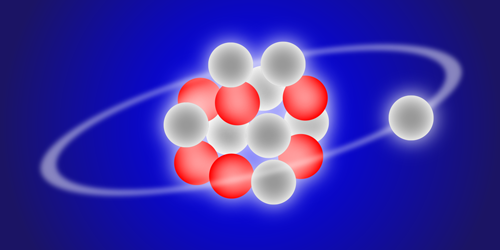Targeting a Nuclear Halo
Certain nuclei have a “halo” made up of one or two nucleons that orbit at a distance from the nuclear core. Such nuclei have a higher probability—or larger “cross section”—of interacting with other nuclei through fusion reactions. To understand the factors behind this enhanced cross section, Xiang-Xiang Sun from the University of the Chinese Academy of Sciences and colleagues have modeled a halo nucleus, carbon-15, and compared it to the haloless nucleus, carbon-14 [1]. They find that two factors play a role in carbon-15’s increased reaction likelihood: its large size and its deformed shape.
Physicists are interested in halo nuclei because their unique structure provides a test bed for nuclear physics theories. “The halo represents one of the most fascinating exotic nuclear properties,” Sun says. Researchers can create these short-lived nuclei in laboratories and study their interactions with other nuclei. Beams of carbon-15 nuclei, for example, have been generated and fired into thorium-232 targets. The outputs suggest that carbon-15 is 2–5 times more likely to fuse with thorium than carbon-14 at energies below the electrostatic (Coulomb) barrier [2].
Sun and colleagues explain the carbon-15 fusion enhancement by modeling the interactions with nuclear time-dependent density functional theory, which tracks the collective motion of the reacting nuclei. The carbon-15 nucleus has a single neutron orbiting a carbon-14-like core. The extended size of the halo leads to a smaller electrostatic repulsion, which means carbon-15 can penetrate deeper into a target nucleus than carbon-14. However, the researchers found that they also had to include direction-dependent effects stemming from carbon-15’s elongated shape. The researchers say their method can be extended to other halo nuclei with more than one orbiting nucleon.
–Michael Schirber
Michael Schirber is a Corresponding Editor for Physics Magazine based in Lyon, France.
References
- X. X. Sun and L. Guo, “Microscopic study of fusion reactions with weakly bound nucleus: Effects of deformed halo,” Phys. Rev. C 107, L011601 (2023).
- M. Alcorta et al., “Fusion reactions with the one-neutron halo nucleus 15C,” Phys. Rev. Lett. 106, 172701 (2011).




